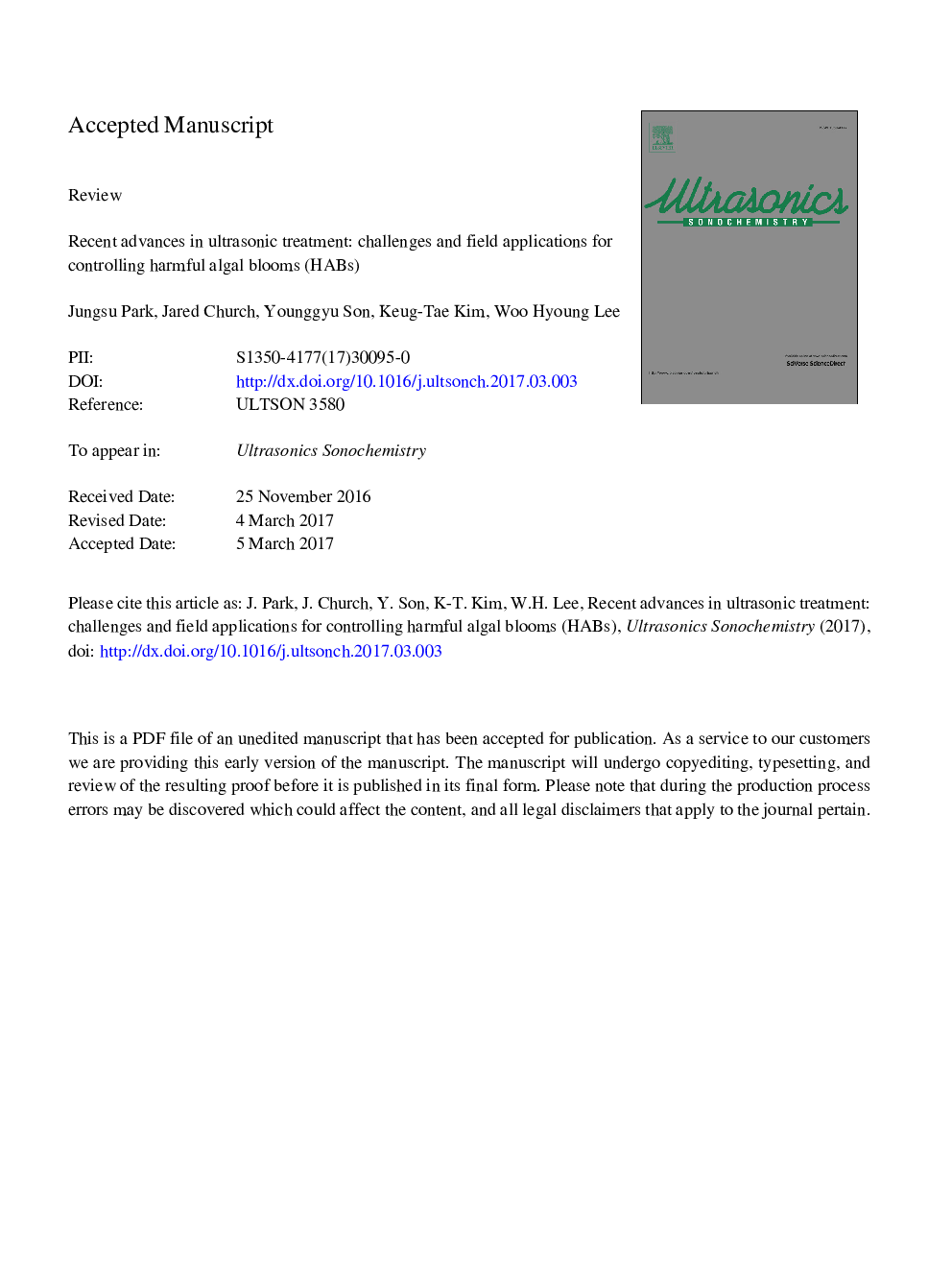| Article ID | Journal | Published Year | Pages | File Type |
|---|---|---|---|---|
| 5144623 | Ultrasonics Sonochemistry | 2017 | 22 Pages |
Abstract
Algal blooms are a naturally occurring phenomenon which can occur in both freshwater and saltwater. However, due to excess nutrient loading in water bodies (e.g. agricultural runoff and industrial activities), harmful algal blooms (HABs) have become an increasing issue globally, and can even cause health effects in humans due to the release of cyanotoxins. Among currently available treatment methods, sonication has received increasing attention for algal control because of its low impact on ecosystems and the environment. The effects of ultrasound on algal cells are well understood and operating parameter such as frequency, intensity, and duration of exposure has been well studied. However, most studies have been limited to laboratory data interpretation due to complicated environmental conditions in the field. Only a few field and pilot tests in small reservoirs were reported and the applicability of ultrasound for HABs prevention and control is still under question. There is a lack of information on the upscaling of ultrasonication devices for HAB control on larger water bodies, considering field influencing factors such as rainfall, light intensity/duration, temperature, water flow, nutrients loading, and turbidity. In this review article, we address the challenges and field considerations of ultrasonic applications for controlling algal blooms. An extensive literature survey, from the fundamentals of ultrasound techniques to recent ultrasound laboratory and field studies, has been thoroughly conducted and summarized to identify future technical expectations for field applications. Case studies investigating spatial distribution of frequency and pressure during sonication are highlighted with future implications.
Related Topics
Physical Sciences and Engineering
Chemistry
Chemistry (General)
Authors
Jungsu Park, Jared Church, Younggyu Son, Keug-Tae Kim, Woo Hyoung Lee,
